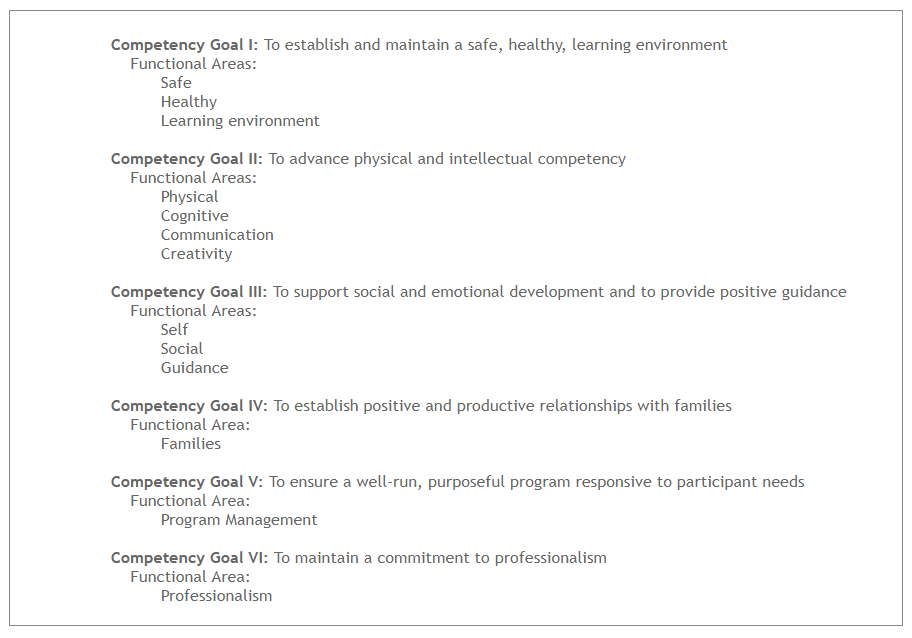step 2
organizing your portfolio
Your portfolio presents your validation of your professional preparation, your work in the six competency areas plus an autobiography and your philosophy statement. Begin by labeling the binder dividers with "Autobiography," numerals I through VI (or 1 through 6),one number per divider, and "Philosophy." Insert these into your binder in numerical order with the Autobiography divider first and the Philosophy divider last.
Validating your professional preparation
At the very beginning of your portfolio, provide your Video 120 CDA certificate of completion and also a description of your work history in early childhood education. The work history only needs to provide evidence of the required 480 hours of employment; there is no need to go back further than recent history. Include also your checklist that indicates your own accounting for the required materials in the portfolio.
Assembling the resource collections
In each of the six competency areas you are asked to present a set of resources. Some of these are forms or other documents (like your First Aid certificate). Some of these are copies of pages from the Internet. Many of these are things you develop and write up, like a set of lessons or a list of books.
Work your way through the resource requirements for each competency area. Be sure to read the directions carefully, since sometimes key information is buried a sentence or two in. As you produce each resource item, either print it out and insert it into your portfolio behind the appropriate divider or insert it into a page protector behind the appropriate divider.
See the Tips page for important helps in creating your resources.
Writing the competency statements
In each of the six competency areas you are asked to present a set of reflections each of which demonstrates your ability in the target competency. These are represented by written work from you. Write them up as clearly and carefully as you can, making certain that you have provided exactly what was asked for in the competency statement directions.
Notice that most of the time there is a general statement asked for first and then more specific statements called "functional areas" that follow. Remember to make the general statement and to write a response to every one of the functional area ones.
Here are the six competencies and their functional areas:
Print out your competency statement for each competency and insert it into your binder after the resource collection that corresponds to the appropriate competency.
See the Tips page for important helps in writing your competency statements.
Writing the philosophy statement
The philosophy statement is a separate essay that sums up your point of view with regard to early education and care, your past experiences and hopes for the future, and your beliefs about child development and learning and your role in supporting those. Plan on writing enough to fill one-and-a-half or two typewritten pages, double-spaced.
Print your philosophy statement and insert it into your binder behind the last divider, which you've labeled "Philosophy." See the Tips page for important helps in writing your philosophy statement.
Review and proof
Once you have all your resources, competency statements and your autobiography and philosophy statement in your binder, review everything using the checklist. Make certain all the pieces are there and nothing is missing. Be sure to add in your certificate of completion from your Video 120 CDA program.
Read through your work one last time, making certain that everything is clear, spelled correctly, and reflects well on you and your professionalism. You might ask a friend to read over your portfolio, since someone else might catch errors you missed. Make certain everything is in the correct place in your portfolio so that your Professional Development Specialist, who will review your portfolio during the verification visit, will have an easy time finding each piece of your work. If necessary, label pieces that might not be quickly identifiable for what they are.
See the Tips page for editorial help you can request from us as part of your Video 120 CDA program.

